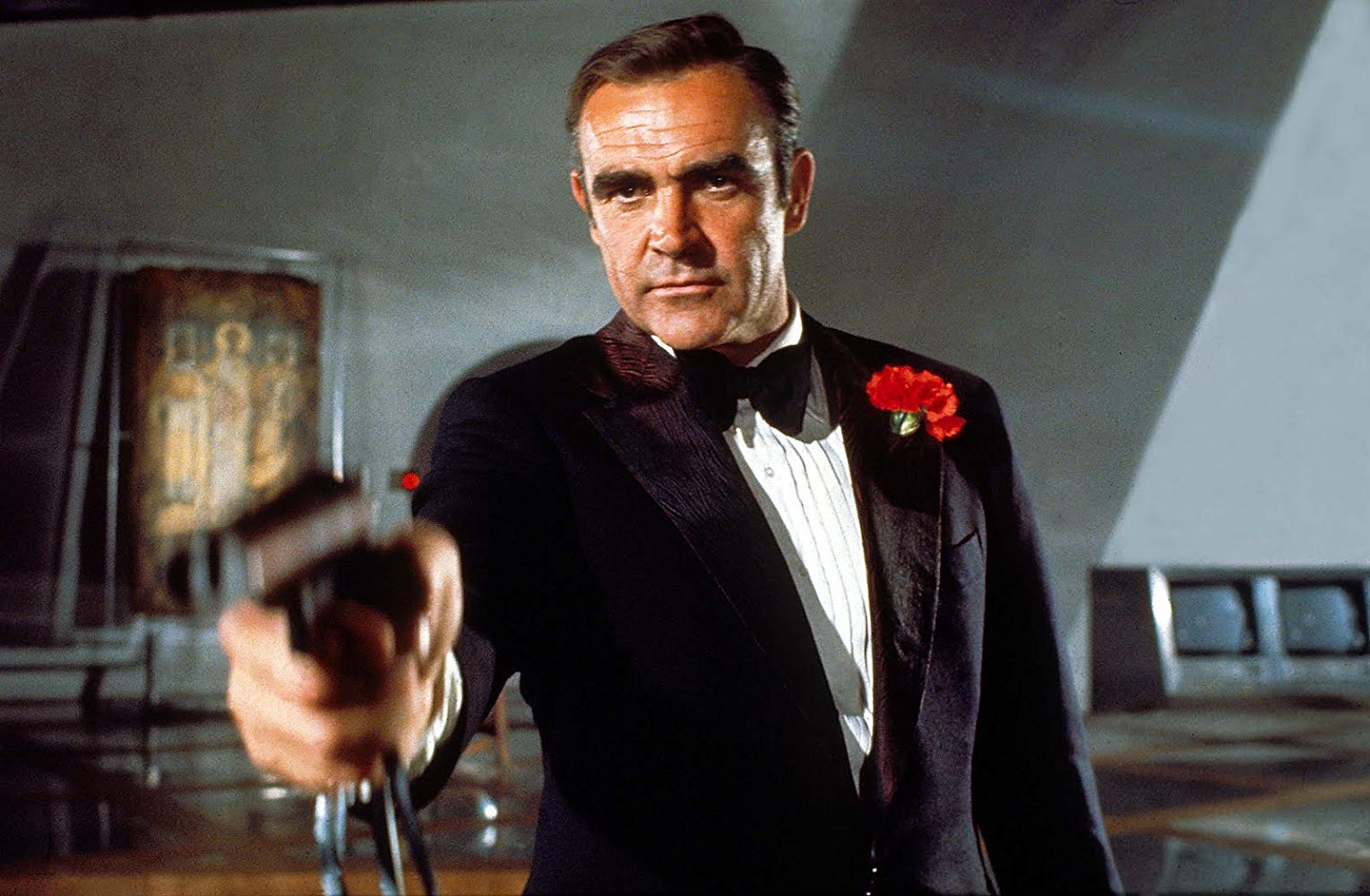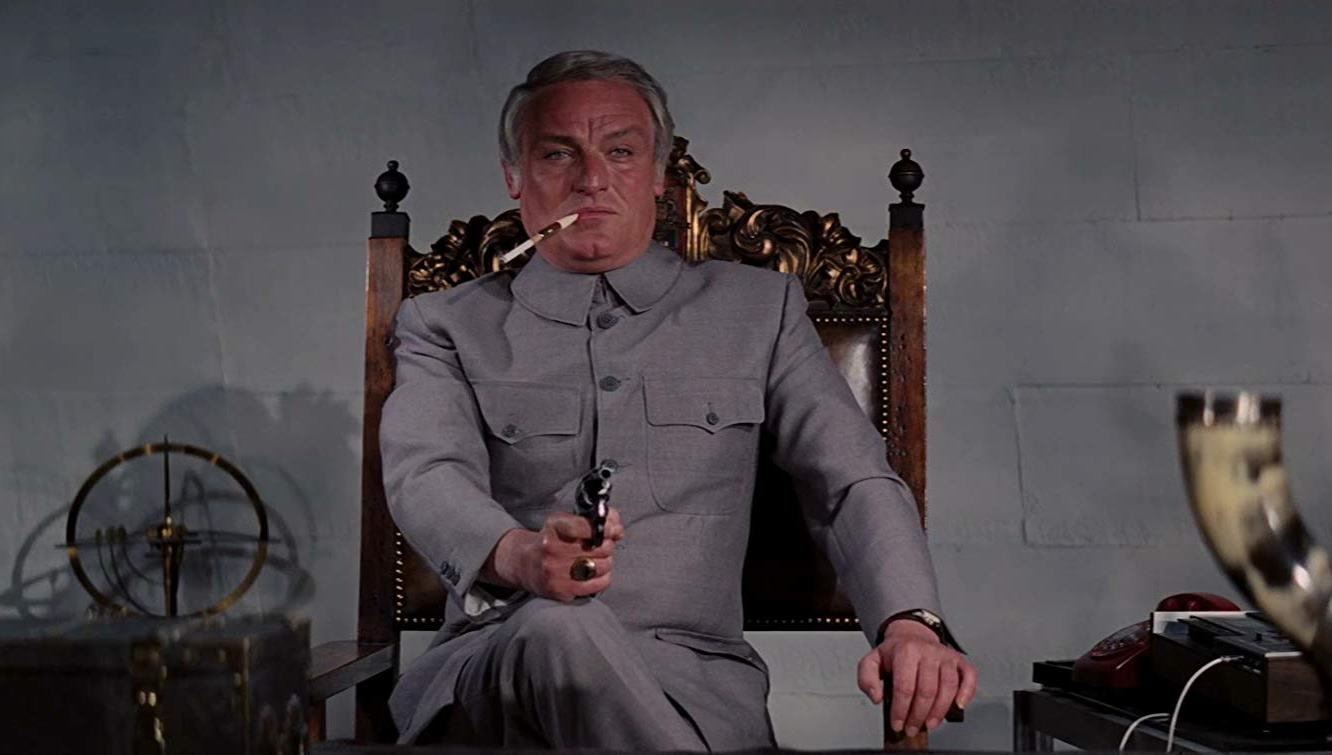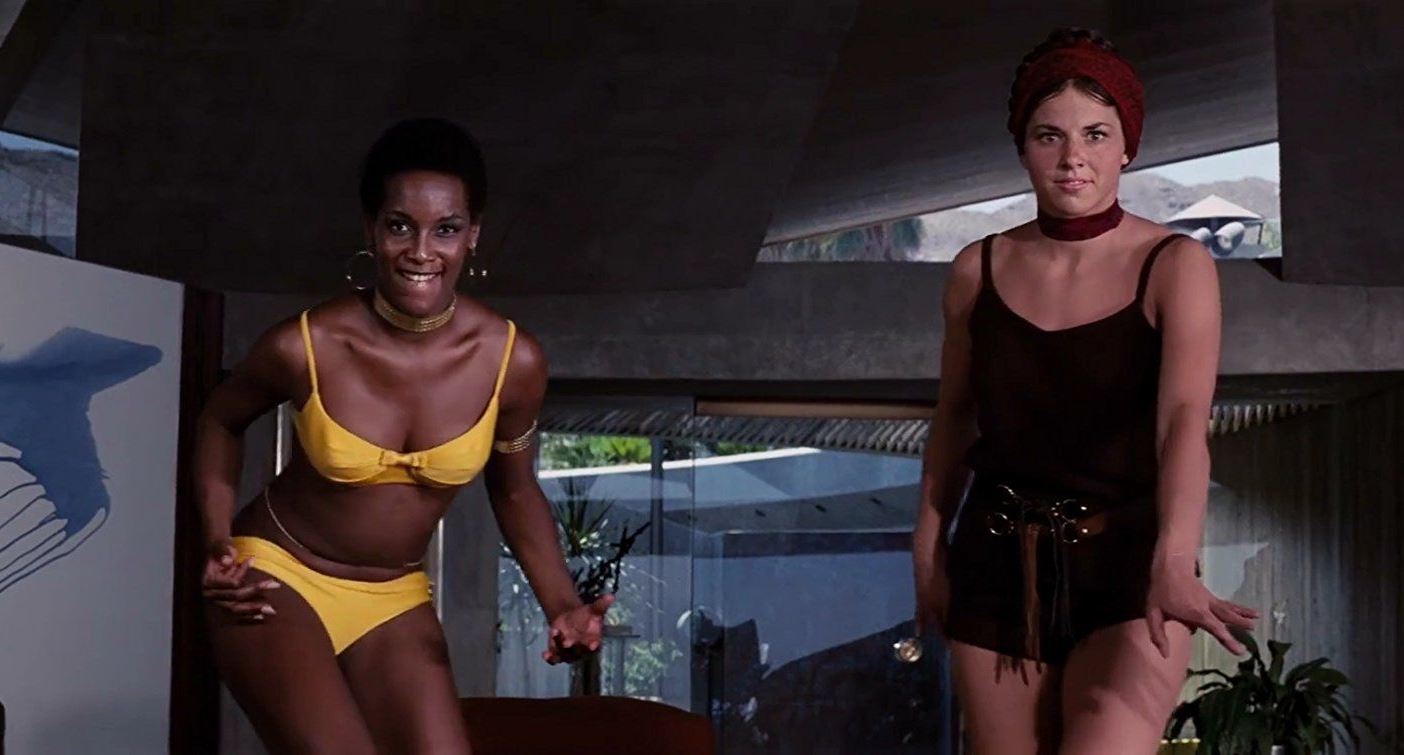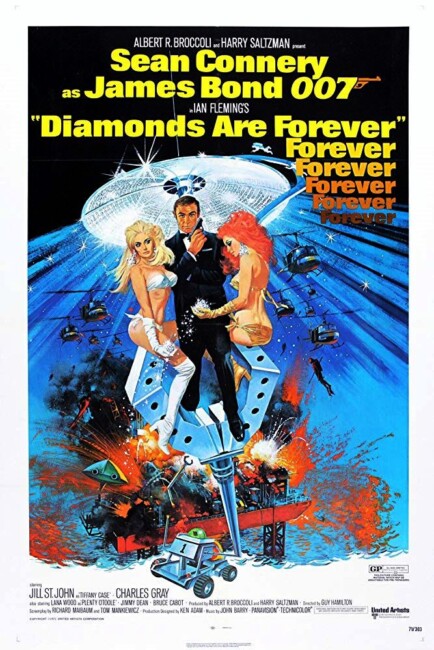UK. 1971.
Crew
Director – Guy Hamilton, Screenplay – Richard Maibaum & Tom Mankiewicz, Based on the Novel by Ian Fleming, Producers – Albert R. Brocoli & Harry Salztman, Photography – Ted Moore, Music – John Barry, Visual Effects – Albert Whitlock, Special Effects – Leslie Hillman & Whitey McMahon, Production Design – Ken Adam. Production Company – Eon Productions
Cast
Sean Connery (James Bond), Jill St John (Tiffany Case), Charles Gray (Ernst Blofeld), Jimmy Dean (Wilfred Whyte), Putter Smith (Mr Kidd), Bruce Glover (Mr Wint), Bernard Lee (M), Desmond Llewellyn (Q), Lana Wood (Plenty O’Toole), Lois Maxwell (Miss Moneypenny)
Plot
British Secret Service assigns James Bond to investigate a diamond smuggling operation. In Amsterdam, Bond impersonates smuggler Peter Franks to infiltrate the operation. He joins forces with his contact Tiffany Case as two hired killers start eliminating their way through the organisation. Bond and Tiffany travel to the USA where the trail leads to a millionaire Willard Whyte who lives in reclusion above a Las Vegas casino. However, instead of Whyte, Bond finds his old enemy Blofeld who keeps the real Whyte a prisoner while he poses as him. Bond must stop Blofeld’s scheme involving an orbital laser satellite built using the diamonds.
Diamonds Are Forever was the seventh James Bond film. During the fifth Bond film. You Only Live Twice (1967), Sean Connery announced his retirement from the role and in the next entry On Her Majesty’s Secret Service (1969), he was replaced by Australian underwear model George Lazenby. On Her Majesty’s Secret Service was an interesting attempt to turn the series in a much more serious direction and craft James Bond in a romantic role. However, Lazenby failed to click with audiences and On Her Majesty’s Secret Service the lowest grossing James Bond film ever.
After Lazenby walked away from the role, the future direction of the series was uncertain. Producers Albert R. Broccoli and Harry Saltzman initially announced Diamonds Are Forever with American actor John Gavin, best known as Janet Leigh’s boyfriend Sam Loomis in Psycho (1960), as Bond, but this was quashed by United Artists who ordered Broccoli and Saltzman to bring Sean Connery back at any price. Connery had become fed up with harassment by paparazzi and the long shooting schedules of the films and was reluctant to return to the Bond series. The price he eventually managed to extract for his return – a $1.25 million salary, a percentage of the profits and the agreement of United Artists to bankroll two films of his own choice – made him the highest paid actor in the world at the time.
Diamonds Are Forever emerged as a concerted attempt to forget about On Her Majesty’s Secret Service and roll the series back to what it had been with Goldfinger (1964). Diamonds Are Forever feels like a strenuous effort to craft another Goldfinger – Goldfinger director Guy Hamilton has been brought back in the director’s chair and Shirley Bassey tunes the title song again. Richard Maibaum’s original script even featured Bond facing Goldfinger’s twin brother, before this was quashed and Blofeld brought back. Interestingly, the plot also originally featured the villain abducting submarines in a super-tanker, an idea that was later rehashed in The Spy Who Loved Me (1977).

Diamonds Are Forever was also Blofeld’s last appearance as a villain – apart from a cameo in the pre-credits teaser of For Your Eyes Only (1981) – after Kevin McClory, the co-writer of the Thunderball (1961) novel with Ian Fleming, issued a legal challenge claiming that Blofeld was his creation. The dispute was eventually settled by McClory’s estate following his death in 2006 and Blofeld made his proper reappearance played by Christoph Waltz in Spectre (2015) 44 years later.
Diamonds Are Forever followed the process begun with You Only Live Twice of fairly much abandoning the Ian Fleming source novel altogether. The plot in Ian Fleming’s 1956 novel about Bond pursuing diamond smugglers and becoming involved with mobsters was clearly too small in scale for the film – it feels like the film has used scraps of Fleming as a springboard and then welded the series formula on top of this.
About all that Richard Maibaum keeps from the book is the vague connection of Bond posing as Franks and tracing a diamond smuggling operation, the heroine Tiffany Case, the gay henchmen Wint and Kidd and a stopover in Las Vegas (which, when one thinks about it, is actually more of the source novel than all subsequent James Bond adaptations retain). Blofeld, Amsterdam, the orbital laser, the action scenes and the entirety of the plot is all an invention by the film. The laser satellite element feels out of place, as though it has to be there because the formula dictates that Bond have to deal with a world threatening menace.

Moreover, Diamonds Are Forever throws out continuity to the rest of the series – Bond is supposed to be obsessively pursuing Blofeld because he killed Tracy at the end of On Her Majesty’s Secret Service, but there is not the slightest mention made of her anywhere in the film. Originally, it had been planned that Diamonds Are Forever would start with Blofeld’s murder of Tracy that comes at the end of OHMSS, but here it is as though Broccoli and Saltzman want audiences to forget that OHMSS even happened.
People often point to Roger Moore entries such as The Man with the Golden Gun (1974), Moonraker (1979) and A View to a Kill (1985) as the low-points of the James Bond series but Diamonds Are Forever offers ample evidence that the Sean Connery Bond films were not all masterpieces either. The script often verges on the incoherent. There are gaping holes – why does Blofeld want to kill off the people in his own smuggling operation? Why does the CIA assist Bond in smuggling the diamonds and then after doing so so turn around to prosecute he and Tiffany? She also seems to go through the entire film without ever finding that Bond is not Franks. Like most of the Roger Moore films, the only thing that seems to hold Diamonds Are Forever together is the kinesis of connecting one action scene to the next.
However, with the exception of the car chase through the streets of Las Vegas (which does feature the amusing incongruity of Bond driving a car through an alley on two wheels and it emerging out the other end balanced on the opposite side to the one it went in on), the set-pieces are dull. There are a couple of good fight sequence – between Bond and the real Franks in an elevator, and between Bond and two girls Bambi and Thumper. The big climactic set-piece around an oil rig is woeful, one of the weakest climactic set-pieces in the entire series – the scene even seems to cut off in mid-flow.

Guy Hamilton had made the series finest entry with Goldfinger but in his return here, and with the next two entries, it is as though all the style and panache that made Goldfinger had entirely deserted him. The effects are decent but the sets never before seemed so unimaginative. The photography is utterly flat, leaving the screen crying out for colour at times.
Charles Gray makes a terrible Blofeld – maybe this was the worst performance of Gray’s career. As a super-villain, Gray radiates zero threat and is arguably the worst villain in the entire James Bond series. Jill St John demonstrates a remarkable lack of talent. Her Tiffany is one of the most empty-headed women to grace the Bond series and she has been called the worst ever Bond girl. That is not quite the case – as that is a distinction that would have to be reserved for Lana Wood as the secondary heroine here. Bruce Glover and Putter Smith as the two gay killers are initially amusing but eventually become overplayed to the point of annoyance.
The other James Bond films are:– Dr No (1962), From Russia with Love (non-genre, 1963), Goldfinger (1964), Thunderball (1965), You Only Live Twice (1967), On Her Majesty’s Secret Service (1969), Live and Let Die (1973), The Man with the Golden Gun (1974), The Spy Who Loved Me (1977), Moonraker (1979), For Your Eyes Only (non-genre, 1981), Octopussy (1983), A View to a Kill (1985), The Living Daylights (non-genre, 1987), License to Kill (non-genre, 1989), GoldenEye (1995), Tomorrow Never Dies (1997), The World is Not Enough (1999), Die Another Day (2002), Casino Royale (non-genre, 2006), Quantum of Solace (non-genre, 2008), Skyfall (non-genre, 2012), Spectre (2015) and No Time to Die (2021). Casino Royale (1967) and Never Say Never Again (1983) are non-series Bond films. Everything or Nothing (2012) is a documentary about the Bond series.
Trailer here

